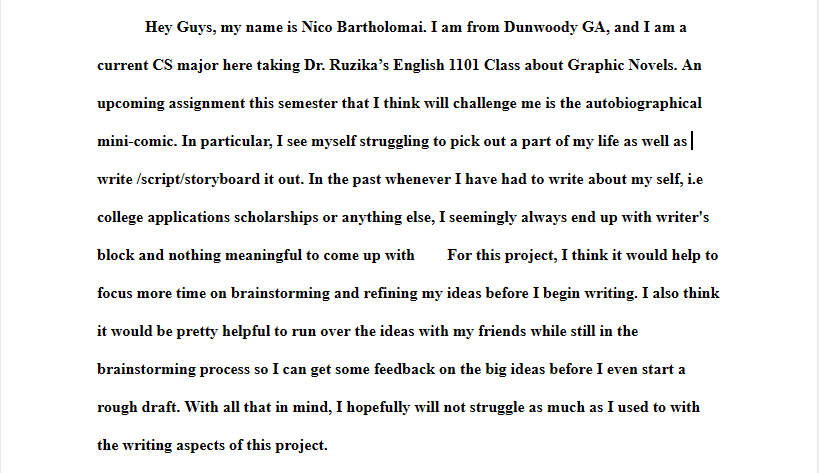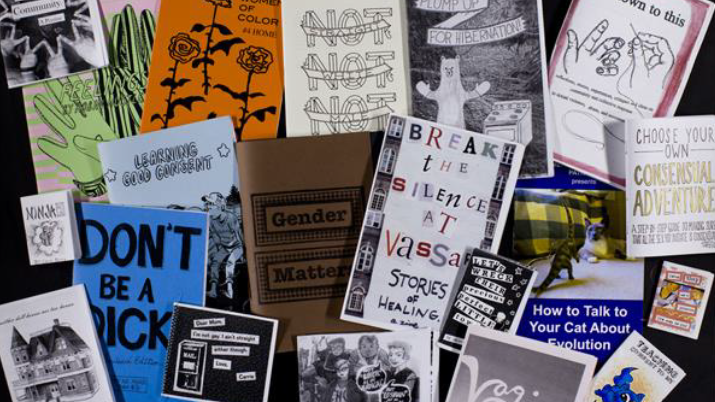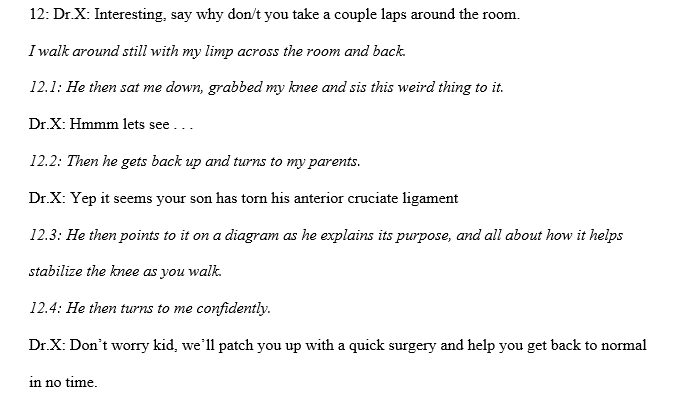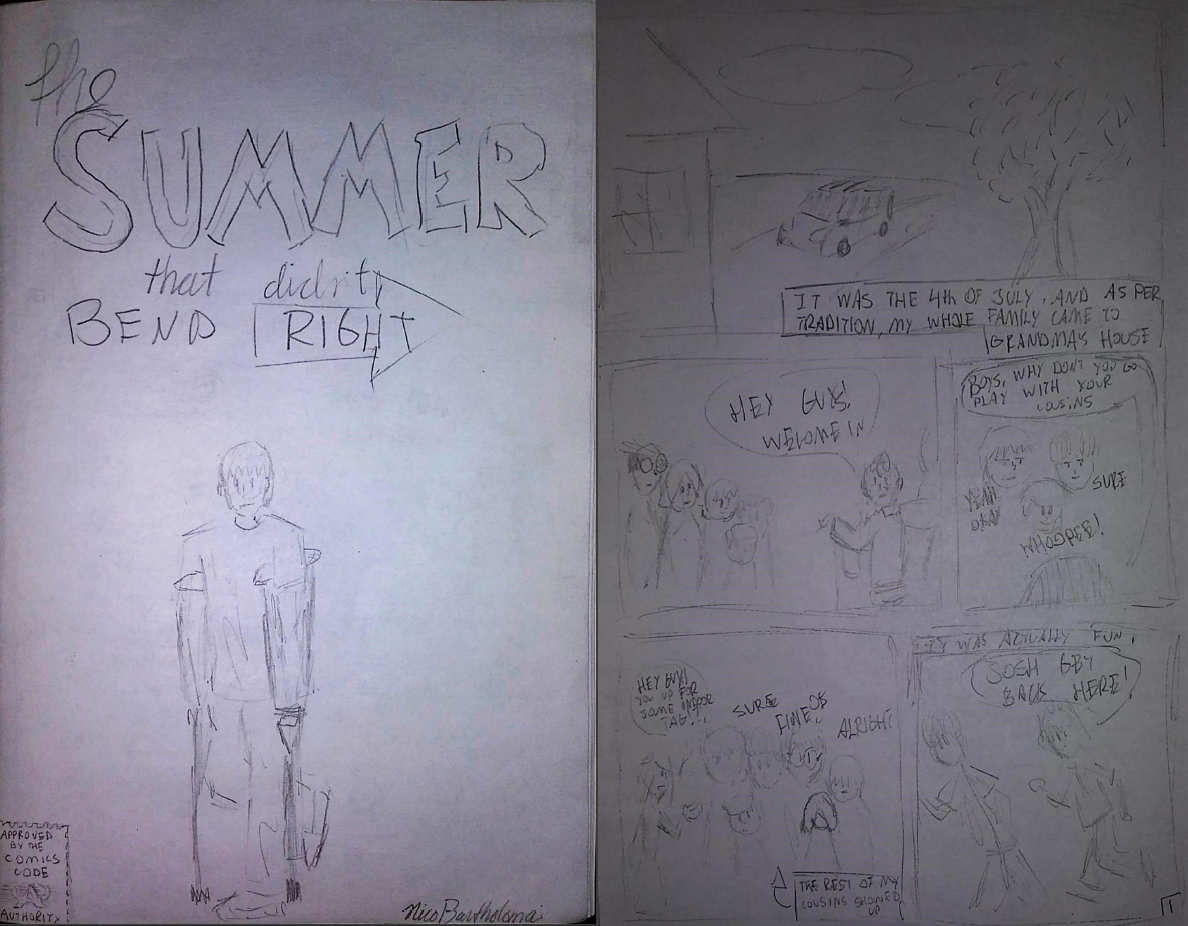
Throughout the semester I gained many multimodal communication skills through many mediums including video, a written essay, presentation, and most notably comic. The particular mode of communication that was explored in this course was the comic book. Covering the various ways to communicate, this course had me construct several artifacts to show my proficiency in each respective mode of communication. Amongst those, I created an introductory video, a Pecha Kucha on Zines and Comix, and a memoir that was then transformed into an autobiographical comic. Both the memoir and the comic were about the summer of 2015 in which several incidents involving my torn ACL lead me to partially overcome parts of my awkward personality. Most importantly through the creation of these, I learned the valuable skill of project staging and process whether by being graded on these individual steps and drafts or out of necessity to ensure they are done properly. This is a crucial skill both for staying sane and keeping stress low while working on large projects and applies to every form of communication if that form is to be used as effectively as possible.
The first step in any process when starting on a project is the brainstorming. Here its general ideas, themes, and approaches are planted. Two of the aforementioned projects had direct assignments that are considered brainstorms. The brainstorm for the memoir consists of the general plot for the story including key story points.

It also includes potential descriptive elements that appeal to one of the senses. Having only general bullet points of the story helps when writing later drafts to guide as a sort of checklist to ensure key events are covered. While also still being flexible enough that the exclusion of some points and inclusion of new ones is not a major change that requires lots of reworking. The inclusion of possible examples of descriptive elements helps give ideas for how to include and set up scenes that are more realistic and sympathetic to the reader. For the comic book, a small thumbnail for each page was created. In these thumbnails, a general outline of each page was created. This includes the general action of the people in all the scenes as well as the placement of the dialogue and narration boxes.

By having small sketches of every page it is easier to see how all the pages flow into one another. The thumbnails being small and relatively quick to draw makes it much easier to explore other ways of showing the same scenes and actions since there is not a large time commitment to creating a single thumbnail. They also help with the planning of the layouts of later drafts since they can show the number of pages needed and what side of the page the images need to be placed on. This ease of view is crucial for the creation of the comic later on since they are created in a magazine-style and the order of the pages properly needed can be somewhat unintuitive. For instance, since this is being bound by staples the first and last page would need to be on the same sheet of paper. This initial brainstorming makes it much less of a headache to create later drafts as the basis of the organization is already created, while still being flexible enough for major changes and overhauls.
Then comes taking the brainstorm and putting it together into something closer to the ned product. Drafting is where many aspects of the brainstorm can be fleshed out and added to. For the memoir, its first draft includes all of the main plot and dialogue that is intended for the final. This draft makes sure that the details and structure of the ideas get organized without needing to worry about things like the specifics of grammar and punctuation which will be taken care of in later drafts. This way the beginning is not overwhelming and only the main topics can be focused on.
For the draft of the video, the general script was written out. This served more as a guideline for me to know the important topics to cover while talking in the video and less as exactly what I needed to say verbatim.

Having it up to reference during the video was very helpful since it served as a good reminder of the next thing to say. The draft for the presentation was also somewhat of a script. It outlined all of the key ideas and important topics regarding underground comix and zines, such as their respective histories, subgroups, and movements within them, and similarities between them.

This helped ensure that the following powerpoint created contained images that related to these topics and helped the project and that the presentation was on track to meet the length requirement for being a Pecha Kucha. For the comic, the draft came in two separate parts, both a script and a rough drawing. The script was adapted directly from the final version of the memoir to make sure that the comic maintained the same story as the memoir. Responding to some feedback, I added another part to the ending to make it seem less abrupt and gave it a more positive complete outcome.

From both that script and the thumbnails came the rough draft of the comic. The draft helped with finding the correct size and placement for all the panels and the speech/thought bubbles within them.

It also served as good practice for the arrangement of the pages on the sheets to make sure they would be bound properly. Altogether the drafts were good practice for the more difficult parts of the final and made sure they covered the correct topics.
The final versions took any feedback on the drafts and corrected them accordingly. The final version of the memoir included more of a takeaway for the story at the end of it to give the story more meaning. Similarly, the comic had even more panels added to it so that more emotion could be shone and the ending was lengthened as well. In between the draft and the final a second very rough thumbnail sketch of the comic was created to show the new insertion of the panels and to help figure out how that would affect the new page length. The presentation drew from the draft and included pictures along with the existing script. I also made sure that I had enough to say to fill the 20 slides 20 seconds format requirement for the presentation. During the presentation itself, the images proved to be more helpful than my notes in jogging my memory for what to say for each slide since at some point I lost track of where I was in my notes.
The entire drafting process as vital for the creation of a goof and complete final draft. Without all the small steps taken to complete the comic it would have been very difficult to create it on the first try. By breaking up the page management, story, and illustrations to their own steps it became much easier to combine those all at the end. Trying to all of those steps in one large steps at once to create one final product would be much more daunting and probably a disaster. Similarly, without breaking up the pecha kucha into research, a script, and then the presentation, it would be very difficult to do all three subsequently. The class taught very good management skills, as well as a good incorporation of the projects with their multimodal themes.